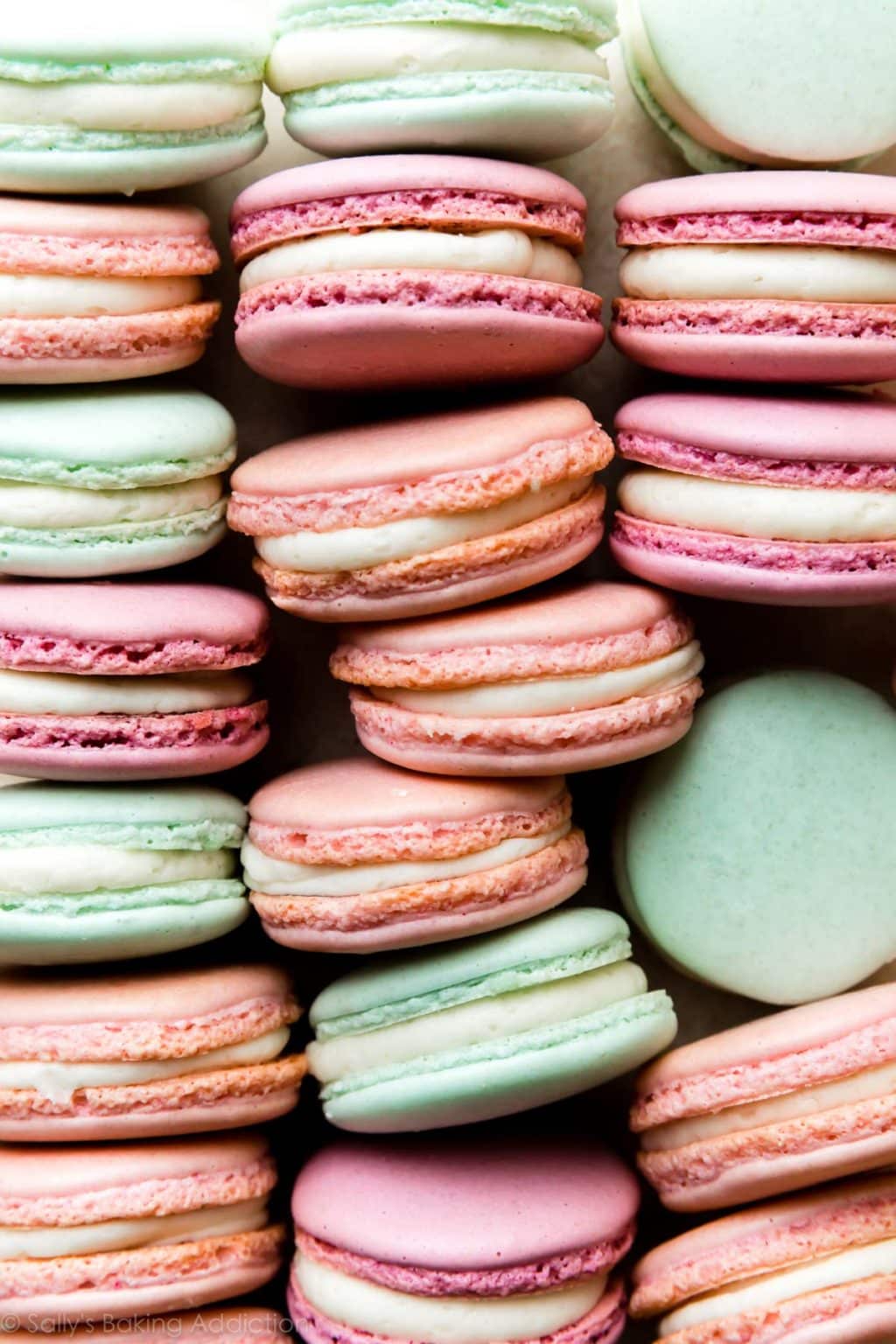French cookies offer a delightful journey into the world of sweet treats. These tasty morsels showcase the skill and artistry of French baking traditions.
From simple to fancy, French cookies come in many forms and flavors.
You can easily make many classic French cookies at home with the right recipes. Whether you want to try crisp palmiers or soft madeleines, French cookie recipes let you bring a taste of France to your kitchen.
With some basic ingredients and techniques, you can create these delicious treats to enjoy or share with others.
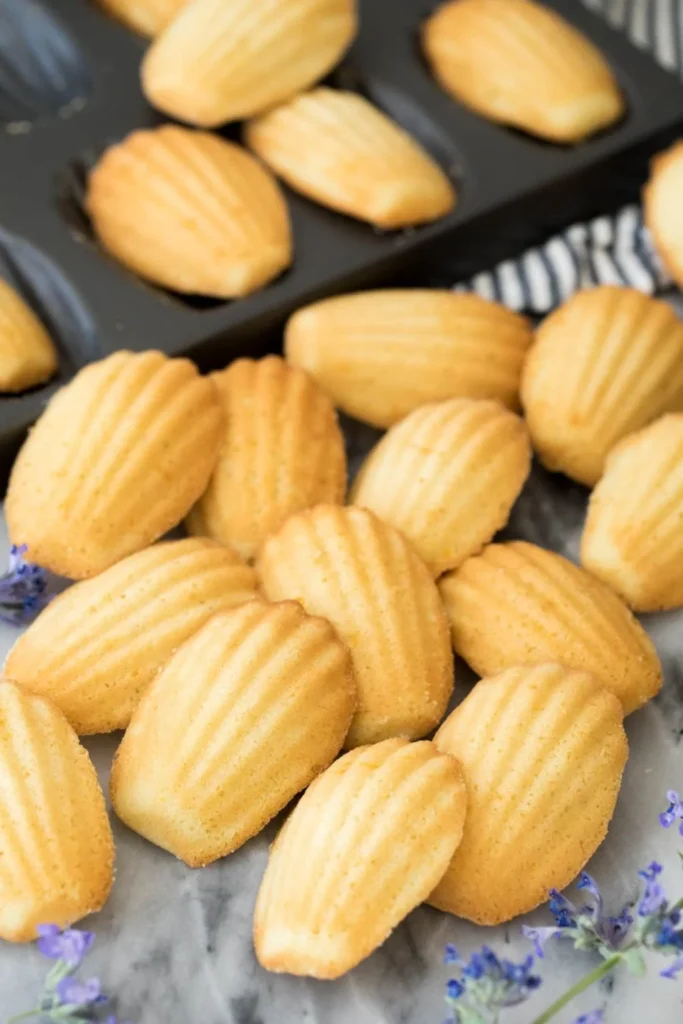
1. Madeleines
Madeleines are small, shell-shaped French butter cakes. You’ll love their light, spongy texture and delicate flavor.
To make them, beat eggs, sugar, and vanilla until pale and thick.
Gently fold in sifted flour, then add melted butter. Chill the batter for at least 4 hours. This helps create the signature bump on top.
When ready to bake, preheat your oven to 375°F. Brush madeleine molds with butter and dust with flour.
Spoon batter into the center of each mold.
Bake for about 10-12 minutes until golden brown. Madeleines taste best when eaten fresh, still warm from the oven.
Enjoy them with a cup of tea or coffee for a true French experience.
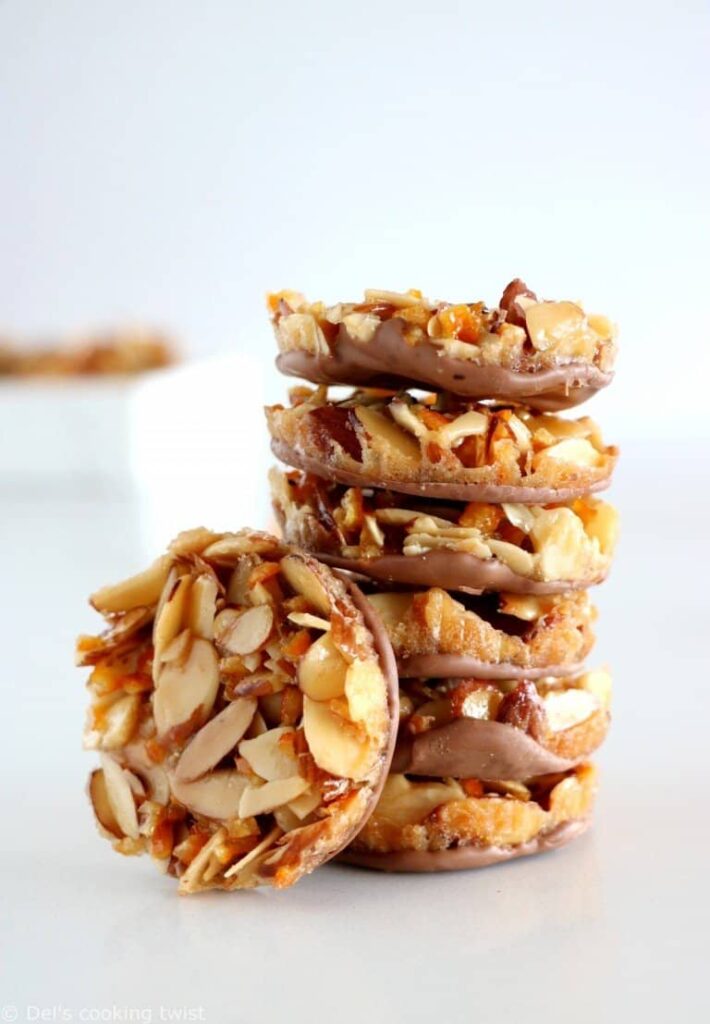
2. Florentines
Florentines are thin, delicate French cookies that will impress your friends and family. These lacy treats combine nuts, candied fruits, and chocolate for a unique flavor and texture.
To make Florentines, you’ll mix nuts and fruits with a sweet batter. Spoon small amounts onto a baking sheet, leaving space for them to spread.
They bake quickly, becoming golden brown and crispy in about 10 minutes.
Once cooled, you can dip or drizzle the cookies with melted chocolate for extra indulgence. Florentines are perfect for special occasions or as a fancy addition to your cookie platter.
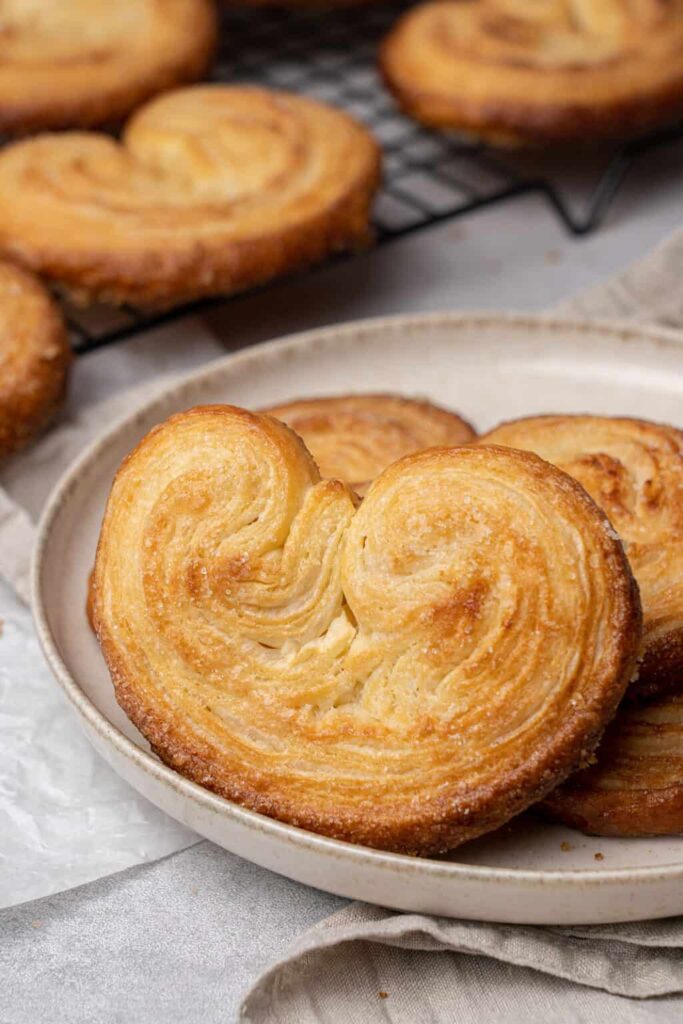
3. Palmiers
Palmiers are crispy French cookies shaped like palm leaves or elephant ears. You can make them with just two ingredients: puff pastry and sugar.
To create palmiers, roll out puff pastry and sprinkle it with sugar. Fold the sides towards the center, then fold again.
Slice the rolled dough into pieces.
Place the slices on a baking sheet lined with parchment paper. Leave space between each cookie for spreading.
Bake at 375°F for about 12 minutes until golden brown.
Palmiers have a satisfying crunch and caramelized sweetness. You can customize them by using different types of sugar or adding spices like cinnamon.
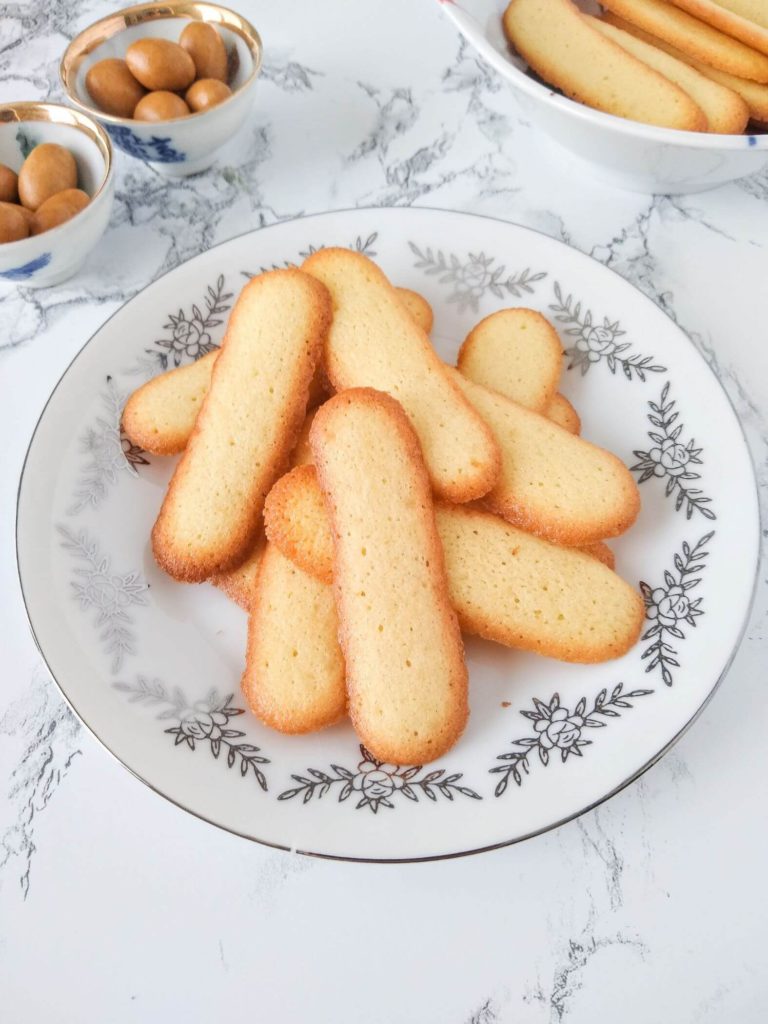
4. Langues de Chat
Langues de Chat are delicate French butter cookies shaped like cat tongues. Their thin, crisp texture makes them perfect for dunking in tea or coffee.
To make these cookies, you’ll cream butter and sugar, then mix in egg whites and vanilla. Fold in flour until just combined.
Pipe the batter into thin strips on a baking sheet.
Bake the cookies at 375°F (190°C) for 5-7 minutes until the edges turn golden brown. Let them cool completely before serving.
You can dress up Langues de Chat by sprinkling chopped nuts or sugar on top before baking. They also pair well with chocolate ganache or fruit preserves.
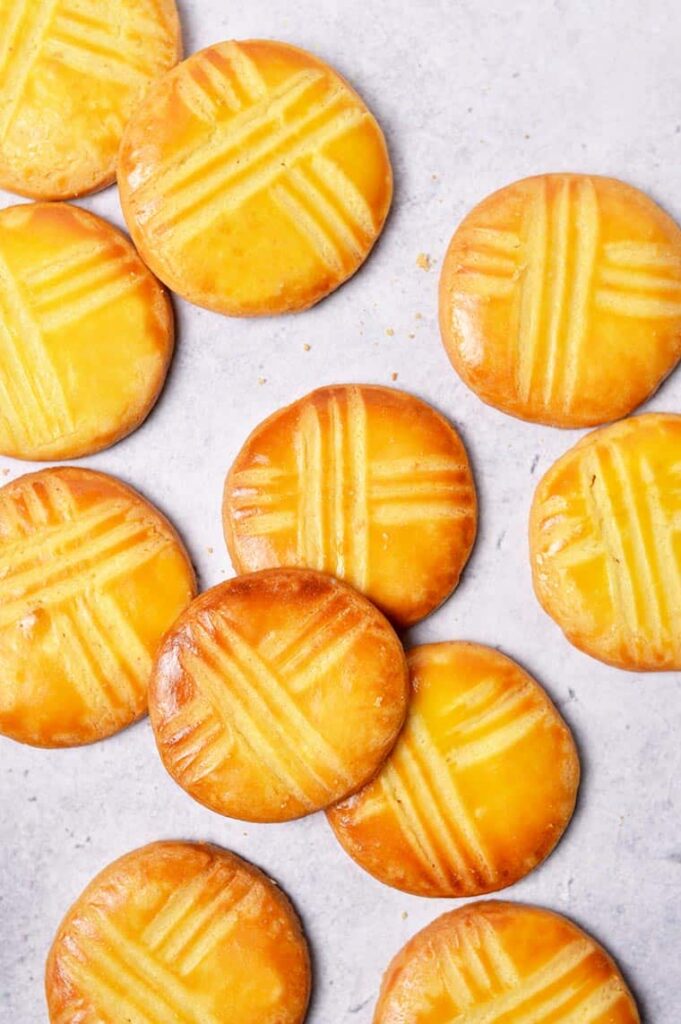
5. Sablés Bretons
Sablés Bretons are delicious French butter cookies from the Brittany region. These treats have a rich, crumbly texture and a slightly salty taste.
To make them, you’ll cream together salted butter, sugar, and egg yolks. Then, mix in flour to form a soft dough.
Roll out the dough and cut it into round shapes. Chill the cookies before baking to help them keep their shape.
Bake the cookies at 350°F (180°C) until they turn light golden brown around the edges. Let them cool before enjoying their buttery, melt-in-your-mouth goodness.
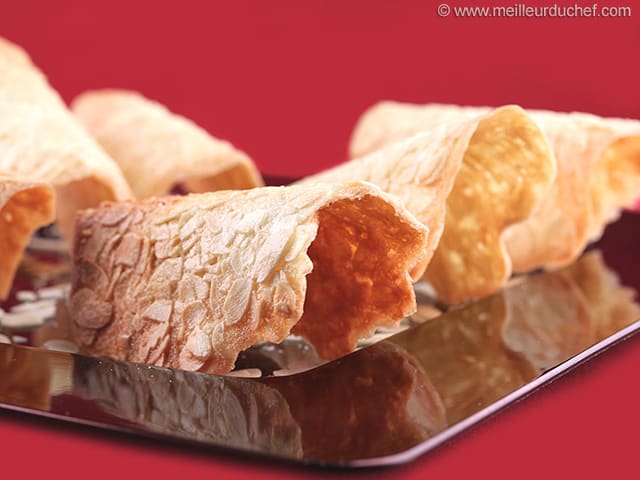
6. Tuiles Aux Amandes
Tuiles aux amandes are thin, crispy French cookies shaped like curved roof tiles. You make them with sliced almonds, sugar, flour, and egg whites.
To prepare these delicate treats, mix the ingredients and chill the dough. Then spread small spoonfuls on a baking sheet and bake at 340°F (170°C) for about 10 minutes.
While still warm, you shape the cookies by draping them over a rolling pin. This gives them their signature curved appearance.
These cookies pair well with dessert wines or coffee. You can also use them to garnish ice cream or other desserts for an elegant touch.
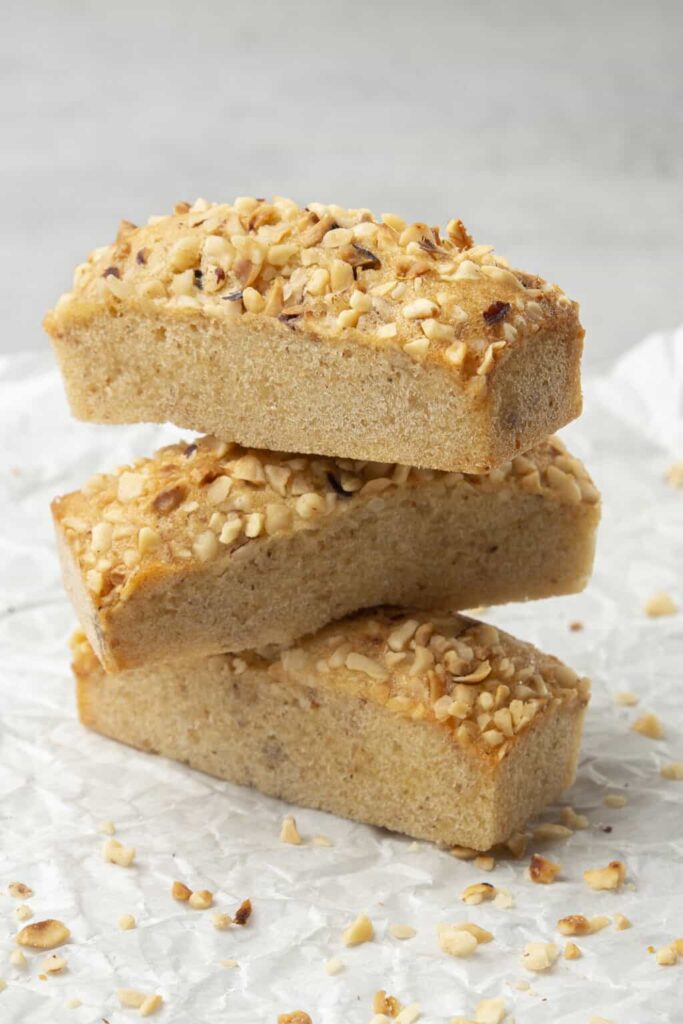
7. Financiers
Financiers are small French almond cakes with a rich, buttery flavor. They have a rectangular shape that resembles a gold bar, which is how they got their name.
To make financiers, you’ll need almond flour, powdered sugar, egg whites, and brown butter. The brown butter gives them a nutty taste.
Preheat your oven to 375°F. Grease mini muffin tins or special financier molds.
Mix the dry ingredients, then fold in the egg whites and brown butter.
Pipe the batter into the molds and bake for about 12-15 minutes. The edges should be golden brown and slightly crisp.
Try different flavors by adding pistachios, hazelnuts, or fruit. Financiers are perfect with tea or coffee as an afternoon treat.
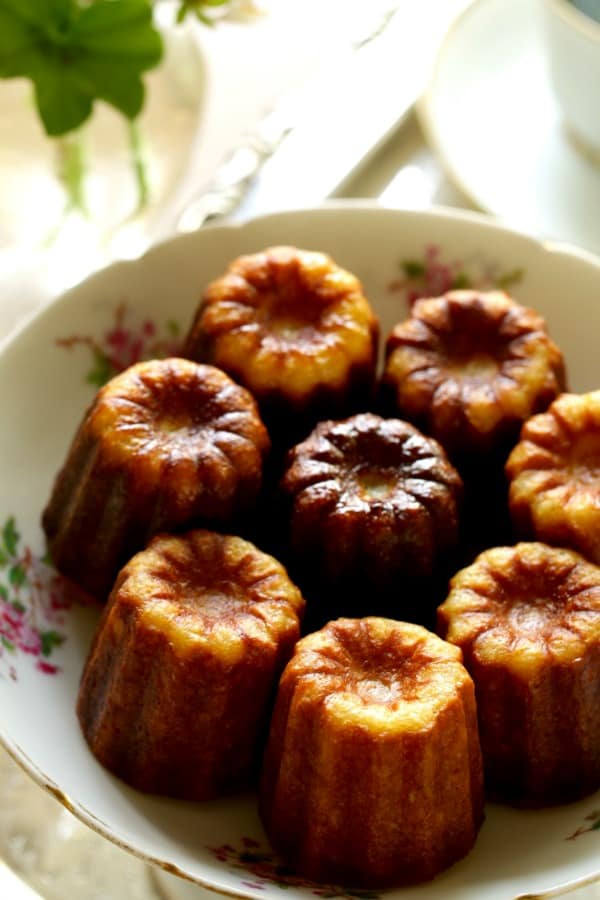
8. Canelés
Canelés are small French pastries from Bordeaux. They have a crispy caramelized exterior and a soft, custardy center.
To make canelés, you’ll mix flour, sugar, eggs, milk, vanilla, and rum. The batter needs to rest for at least 24 hours before baking.
You’ll need special copper molds for the best results. Brush the molds with beeswax and butter before filling them with batter.
Bake canelés at a high temperature to get that signature crispy exterior. The baking process can take up to 1.5 hours.
Enjoy these treats warm or at room temperature. They’re perfect with coffee or as a dessert.
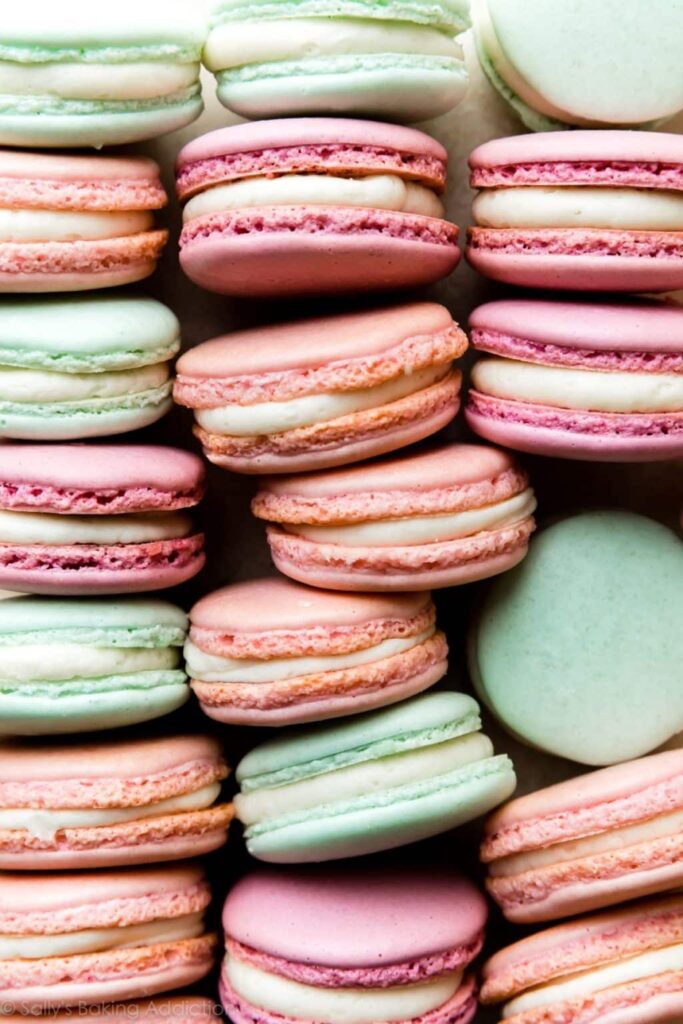
9. Macarons
Macarons are delicate French sandwich cookies with a crisp outer shell and chewy interior. You’ll need almond flour, powdered sugar, and egg whites to make the meringue-based shells.
Beat the egg whites until soft peaks form, then gradually add sugar. Fold in the dry ingredients carefully to maintain the air bubbles.
Pipe small circles onto baking sheets lined with parchment paper. Let them rest to form a skin before baking.
Bake at a low temperature until the shells develop a “foot” at the base.
Once cooled, pair up similar-sized shells and fill with ganache, buttercream, or jam. Refrigerate the assembled macarons to let the flavors meld before enjoying.
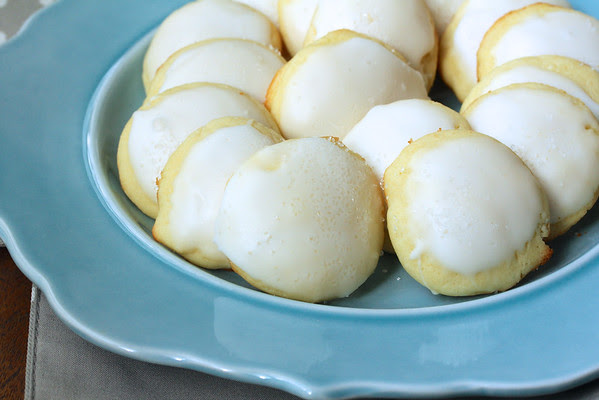
10. Palets de Dames
Palets de Dames are delicate French cookies from Lille. These small, cake-like treats have a soft texture and vanilla flavor.
You’ll find them in many patisseries throughout northern France. The cookies are typically round and flat, resembling small discs.
To make Palets de Dames, you’ll need butter, sugar, eggs, and flour. After baking, they’re topped with a sweet icing made from powdered sugar and egg whites.
You can enjoy these cookies as a snack with afternoon tea. Their light, sweet taste makes them a perfect companion to hot beverages.
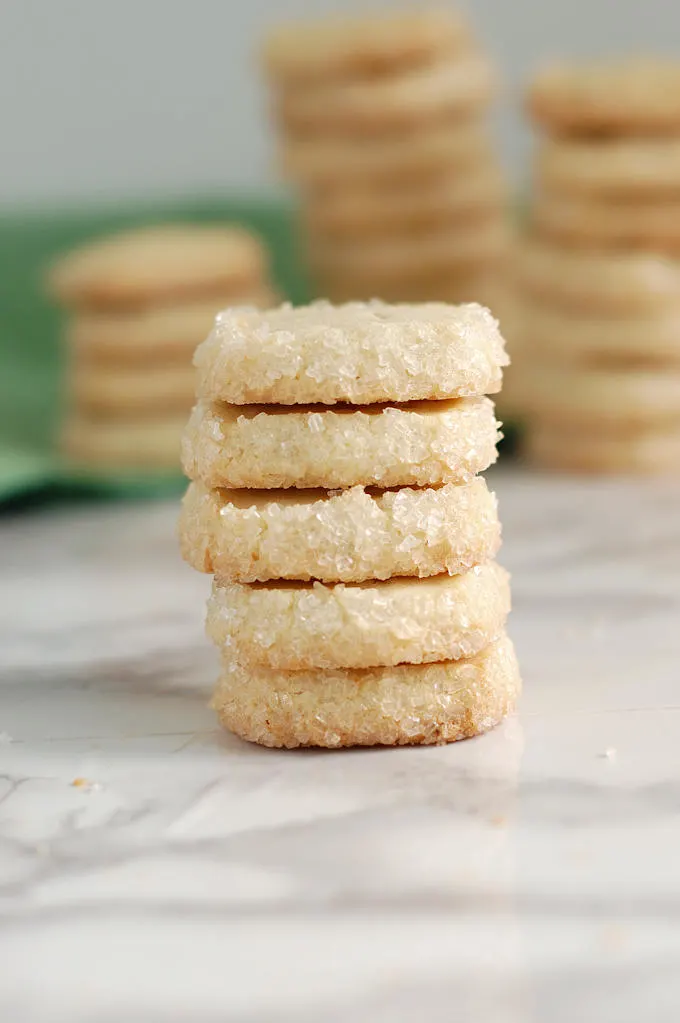
11. Diamants Cookies
Diamants cookies are elegant French treats known for their sparkling appearance. These buttery shortbread cookies get their name from their diamond shape and sugar-coated edges that glitter like diamonds.
To make diamants, you’ll create a simple dough with butter, sugar, flour, and vanilla. Roll the dough into logs and coat them in coarse sugar. After chilling, slice the logs into thin rounds.
When baking, the sugar caramelizes slightly, giving the cookies a delicate crunch. The center remains tender and crumbly.
Diamants are perfect with tea or coffee.
You can customize these cookies by adding lemon zest, cocoa powder, or chopped nuts to the dough. Their elegant look makes them great for gifting or serving at parties.
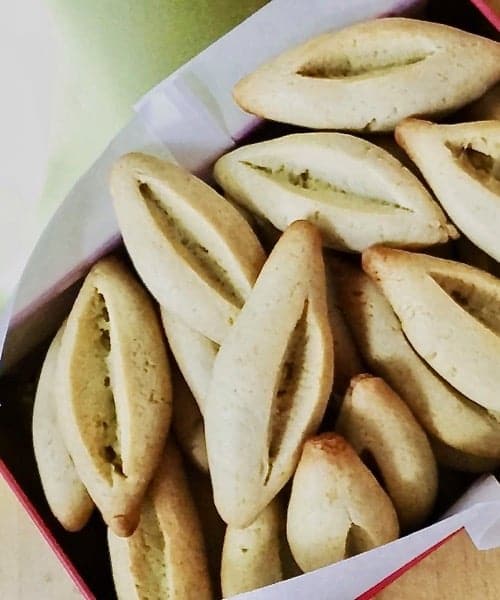
12. Navettes
Navettes are boat-shaped cookies from Marseille, France. These sweet treats have a rich history tied to religious traditions.
You’ll find navettes at local markets and pastry shops in the Marseille region. They have a hard, crunchy texture that may surprise you at first bite.
The classic flavor is orange blossom, giving navettes a unique taste. Some recipes also include almond flour for extra nuttiness.
To make navettes, you’ll need flour, sugar, eggs, and orange blossom water. The dough is shaped into small boats before baking.
Navettes are often eaten during Candlemas celebrations. They can last for weeks when stored properly in a metal container.
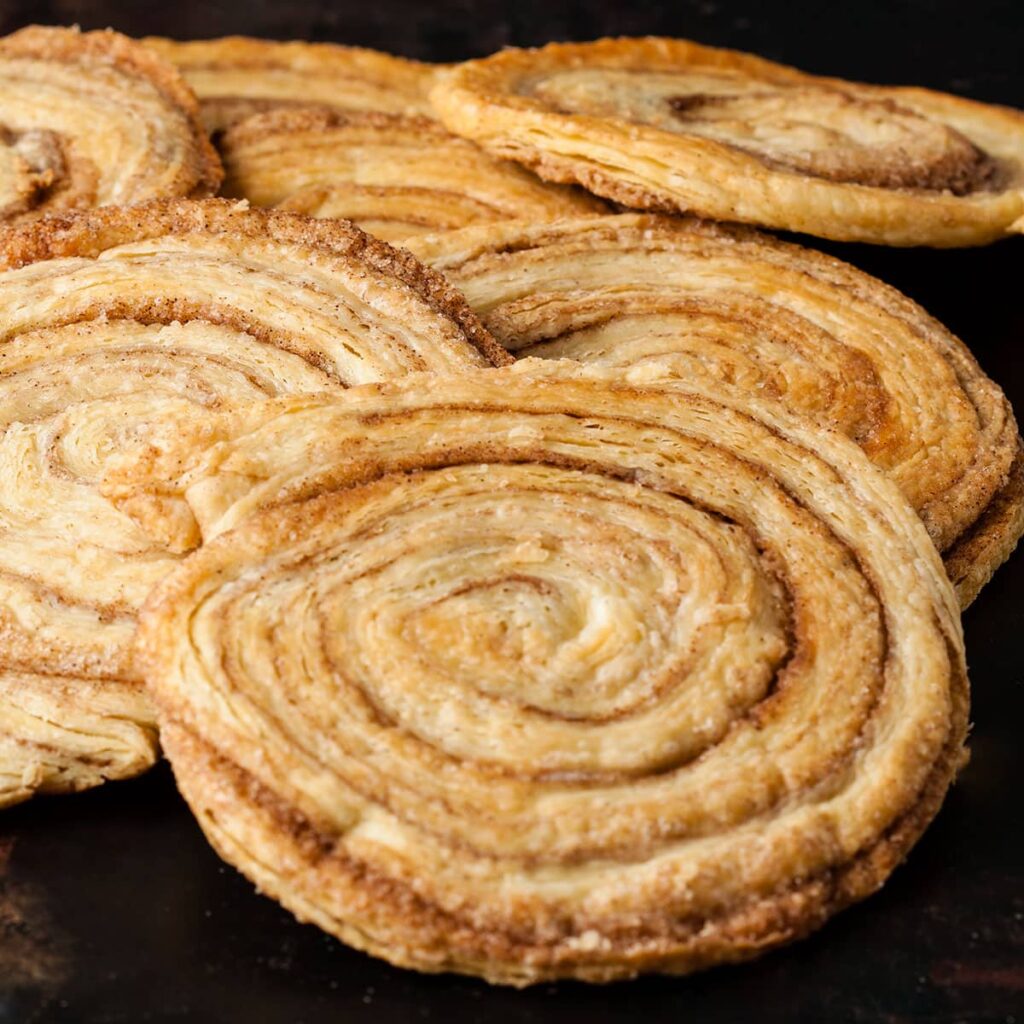
13. Arlettes
Arlettes are thin, crispy French cookies with a delightful swirl pattern. These elegant treats are made from puff pastry dough and cinnamon sugar.
To make arlettes, you’ll roll out puff pastry and sprinkle it with cinnamon sugar. Then, roll the dough into a tight log and slice it thinly.
The slices are baked until golden and crisp. As they bake, the layers separate and caramelize, creating a beautiful spiral design.
Arlettes have a delicate, flaky texture and a sweet cinnamon flavor. They’re perfect with coffee or tea.
You can enjoy these French cookies as a light dessert or elegant snack.
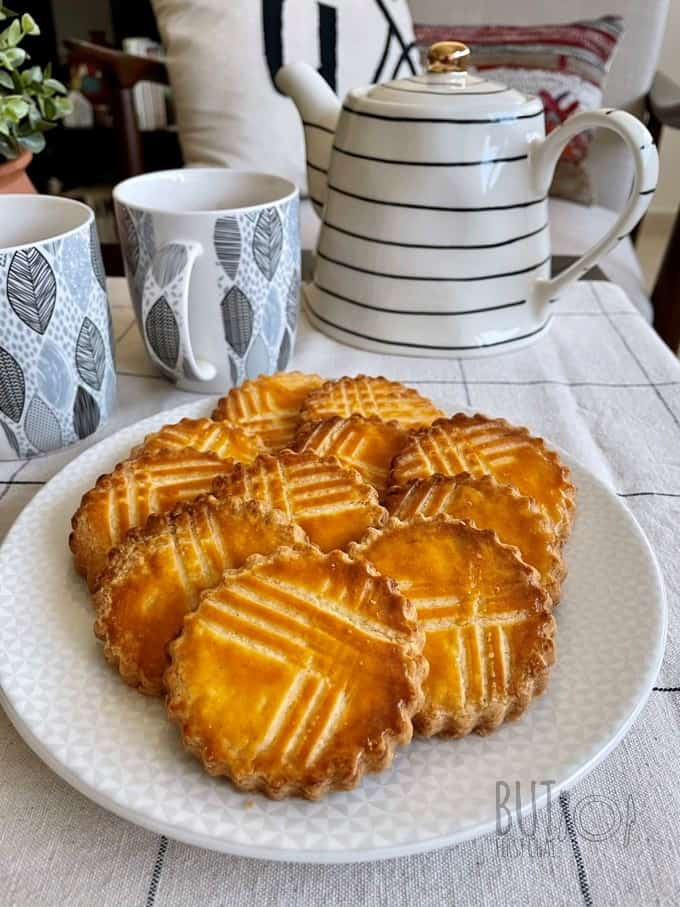
14. Galettes Bretonnes
Galettes Bretonnes are delicious butter cookies from the Brittany region of France. These crisp, golden treats are known for their rich, buttery flavor and slightly salty taste.
To make these cookies, you’ll need butter, sugar, egg yolks, flour, and a pinch of salt. Mix the softened butter with sugar until light and fluffy. Add egg yolks and vanilla extract, then incorporate the flour.
Chill the dough for about an hour before rolling it out. Cut the cookies into rounds and bake them until golden brown.
The result is a crispy cookie with a tender center.
Galettes Bretonnes are perfect with tea or coffee. You can enjoy them plain or add flavors like lemon zest or almond extract for variety.
The Art of Baking French Cookies
French cookie baking combines precision and artistry. You’ll need to master key techniques and choose top-notch ingredients to create these delightful treats.
Essential Baking Techniques
Start by creaming butter and sugar until light and fluffy. This step creates air pockets for a tender texture.
Sift dry ingredients to remove lumps and ensure even mixing.
For delicate cookies like macarons, fold ingredients gently to keep the batter airy. Use a piping bag for uniform shapes.
Chill dough before baking to prevent spreading. Watch baking times closely – even a minute can make a difference.
Cool cookies on a wire rack to maintain crispness.
Practice makes perfect with French cookies. Don’t be discouraged if your first attempts aren’t flawless.
Choosing Quality Ingredients
Pick unsalted butter for better control over flavor. European-style butter has a higher fat content, ideal for rich cookies.
Use fresh eggs at room temperature for better mixing.
Opt for superfine sugar in delicate recipes. It dissolves more easily, creating a smoother texture.
Almond flour is crucial for many French cookies. Look for blanched, finely ground almond flour for the best results.
For chocolate, choose high-quality couverture with at least 60% cocoa content. It melts smoothly and adds depth to your cookies.
Fresh vanilla beans or pure extract elevate flavors. Avoid imitation vanilla for authentic taste.
Historical Significance of French Cookies
French cookies have a rich history that spans centuries. They’ve played a key role in French culture and cuisine, evolving from simple sweet treats to sophisticated delicacies.
Origin and Evolution
French cookies trace their roots back to medieval times. Bakers in monasteries first created simple biscuits as a way to use leftover bread dough. These early cookies were often flavored with honey and spices.
As sugar became more available in the 16th century, cookie recipes grew more complex. Bakers started experimenting with different shapes, textures, and ingredients.
The 18th century saw a boom in French cookie-making. New tools like cookie cutters allowed for more intricate designs. This era gave birth to many classic French cookies we know today.
Cultural Traditions
French cookies are deeply woven into the country’s cultural fabric. They’re not just treats, but symbols of hospitality and celebration.
During holidays, French families often gather to bake cookies together.
This tradition strengthens family bonds and passes down recipes through generations.
Many regions in France have their own special cookie varieties. These local specialties are a source of pride and identity for communities.
French cookies also play a role in gift-giving customs.
It’s common to bring a box of fancy cookies when visiting friends or family. This gesture shows thoughtfulness and respect.
